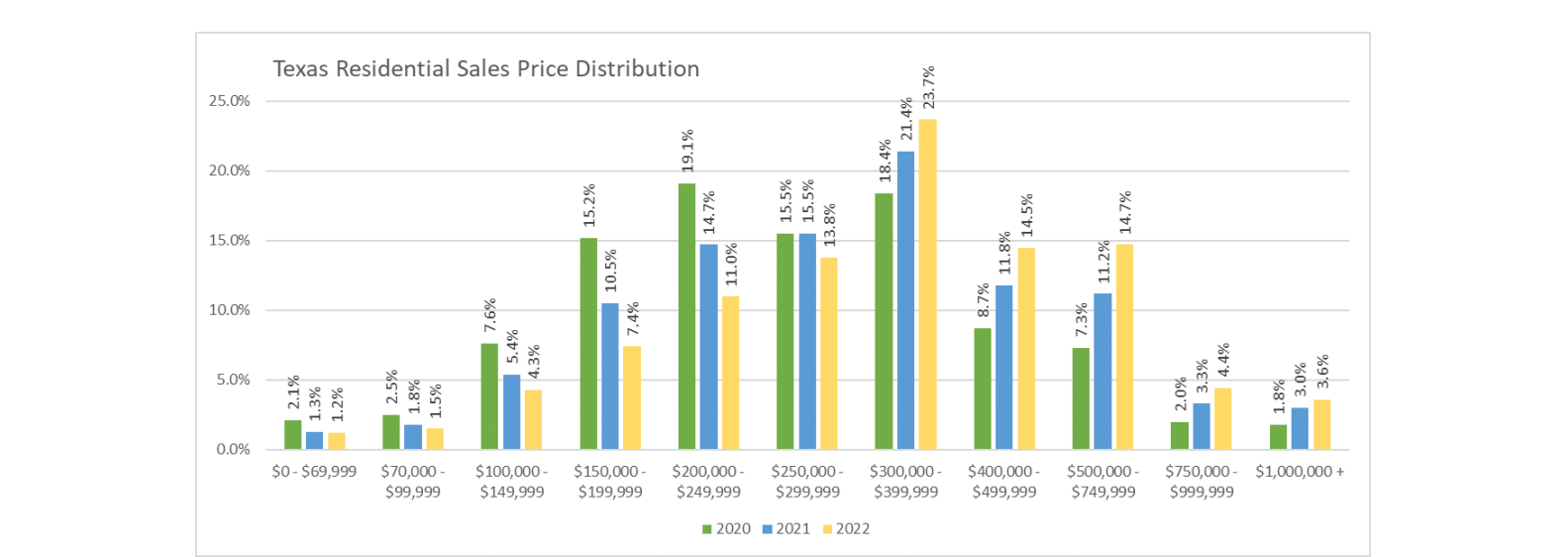Navigating the complex world of real estate can be challenging, but understanding key housing market indicators for real estate agents can make all the difference. By arming yourself with the right knowledge, you’ll be better equipped to make informed decisions as you buy, sell, or invest in real estate. In this blog post, we’ll explore essential housing market indicators, local real estate trends, online resources, and effective communication strategies to help you stay ahead in the ever-changing real estate market.
Key Takeaways
Real estate agents must understand key housing market indicators such as affordability, mortgage rates and home sales data to make informed decisions.
Analysis of local real estate trends can provide insights into neighborhood quality, inventory levels and rental market conditions.
Utilizing online resources for market analysis, effective communication of insights to clients and tailoring information to client needs are essential for success in the real estate industry.
Understanding Key Housing Market Indicators

Housing market indicators are vital tools for real estate industry professionals who need to assess market conditions and make informed decisions. These indicators, such as housing affordability, mortgage rates, and home sales data, provide valuable insights into the overall health and direction of the market. As a real estate agent, understanding these key market indicators can help you better serve your clients and guide them through the complex process of buying or selling a home.
By paying meticulous attention to market conditions, such as home price data, sales price trends, foreclosure auction, and delinquency rates, you can gain insights into the housing market on national and regional levels, including aggregate ownership and national homeownership rates. This knowledge can help you determine the best time to buy or sell a home by taking into account factors such as local housing affordability, interest rates, median days on the market, housing inventory, time of year, market type, and rental market trends.
Home Affordability Index
The Home Affordability Index, a market indicator that gauges potential buyers’ ability to acquire a mortgage based on income and home prices, sheds light on market conditions and pricing trends.
A score of less than 100 on the Housing Affordability Index signifies that the family’s income is not adequate to qualify for an average mortgage on a median-priced home. An affordable home is one that consumes no more than 30% of a household’s income.
The ongoing surge in mortgage rates has escalated housing affordability issues for numerous prospective homebuyers. Understanding the Home Affordability Index can help real estate agents identify areas with more affordable housing options and guide clients towards properties that suit their financial capabilities.
Mortgage Rates
Mortgage rates, which are a crucial aspect of a mortgage loan, have a significant impact on the housing market, as they influence the cost of borrowing and can affect buyer demand. Lower mortgage rates typically lead to increased activity in the housing market, while higher rates can dampen buyer enthusiasm.
In recent years, we have witnessed a trend of rising mortgage rates, which can lead to higher monthly mortgage payments for homeowners. The 30-year fixed mortgage rates have been increasing as follows:
3.92% in February 2022
4.25% in May 2022
4.68% in August 2022
5.12% in November 2022
5.56% in February 2023
This increase in mortgage rates may have an impact on the affordability of homes and the overall housing market.
Rising mortgage rates can have a ripple effect on housing affordability, as they often lead to an increase in home prices. Additionally, higher mortgage delinquency rates can signal a decrease in average income or a disproportionate increase in the cost of living in an area. Experienced investors should be mindful of these trends when considering purchasing foreclosed properties, as they often require significant repairs and investment before becoming habitable.
Monitoring mortgage rates and their influence on the housing market aids real estate agents in pinpointing opportunities for their clients. For example, a buyer’s market may emerge in response to higher interest rates, providing more favorable conditions for those searching for a new home. Conversely, a seller’s market may develop when mortgage rates are low, creating an environment of increased competition and higher prices.
Home Sales Data
Home sales data, including the number of transactions and average sale price, is another valuable market indicator that can help real estate agents gauge market conditions and identify opportunities for their clients. For instance, in January 2023, the median number of days a property remained on the market was 51 days, and 16% of homes sold above list price. This information can be used to advise clients on the best time to buy or sell a property, as well as inform pricing strategies for sellers.
Additionally, rental market trends can provide insights into the overall health of the real estate market. In January 2023, the year-on-year growth rate of rentals was 2.4% compared to January 2022. By staying informed about home sales data and rental market trends, real estate agents can better serve their clients and help them navigate the complexities of the housing market.
Analyzing Local Real Estate Trends

A comprehensive understanding of the real estate market goes beyond national and regional indicators. Insights into neighborhood quality, inventory levels, and rental market conditions can be acquired through the analysis of local real estate trends, equipping real estate agents to deliver a comprehensive market understanding to their clients. Local market analysis can be particularly useful for investors purchasing property and vendors looking to sell.
Effective analysis of a local real estate market involves considering elements like location, employment opportunities, population growth, and proximity to facilities. Online resources such as local real estate agents, property management companies, and county assessor websites can provide valuable property value estimates for a specific area.
For more on the Texas market, see our blog: https://www.quickcommissionadvance.com/blog/texas-housing-market-predictions/
Neighborhood Quality and Amenities
Neighborhood quality and amenities play a crucial role in determining property values and can impact the desirability of an area for potential buyers and renters. Some factors that can have a significant effect on property values include:
Proximity to public transportation
Proximity to shopping centers
Proximity to schools
Proximity to recreational amenities such as parks and beaches
Considering these factors when evaluating a property can help you make informed decisions about its value and potential for growth.
Furthermore, local amenities can influence the rental and property market as properties situated in areas with superior amenities are generally associated with higher rental prices and property values.
Understanding the impact of neighborhood quality and amenities on property values can help real estate agents guide clients towards attractive investment opportunities or desirable locations for their new home.
Inventory Levels
Inventory levels in the housing market can significantly affect housing prices and competition. Low inventory typically leads to higher prices and increased competition among buyers, as there are fewer homes available for sale.
In January 2023, the number of homes for sale rose to 1,310,665 from 1,092,660 in January 2022, representing a 20% increase in year-over-year growth.
Understanding how inventory levels shape the real estate market can help agents advise clients on the best time to buy or sell a property. For example, when inventory levels are low, buyers may face more competition and higher prices, while sellers may benefit from increased demand. Conversely, high inventory levels can lead to more opportunities for buyers and a more balanced market.
Rental Market Conditions
Rental market conditions, including rental rates and vacancy rates, can have a significant impact on the overall health of the housing market. For instance, declining rental rates, as seen in the year-on-year growth rate of rentals in January 2023 compared to January 2022, which was 2.4%, can signal a shift in market conditions.
By monitoring rental market conditions, real estate agents can better understand the attractiveness of an area for investors and its potential impact on the housing market as a whole. Rental affordability, which refers to the proportion of individuals who can rent a residence or apartment while spending no more than 30% of their monthly earnings on rent, is an essential factor for landlords to consider when making real estate investments.
Utilizing Online Resources for Market Analysis

In today’s digital age, online resources have become invaluable tools for real estate agents looking to gather data and stay informed about market trends. Property listing websites, government and industry reports, and social media platforms can all provide insights into the housing market and help agents make informed decisions when advising clients.
Online resources, when aptly utilized, enable real estate agents to:
Access contemporary information on available properties, pricing trends, and market conditions
Connect with industry professionals, share information, and stay informed about the latest market developments
Better serve their clients and guide them through the complex process of buying, selling, or investing in real estate.
Property Listing Websites

Property listing websites are an essential resource for real estate agents, providing up-to-date information on available properties, pricing, and market conditions. Reputable websites like Zillow, Realtor.com, and Trulia offer extensive databases of property listings, allowing agents to monitor trends and identify opportunities for their clients.
In addition to providing valuable market insights, property listing websites can also help agents:
Identify active listings that meet their clients’ unique preferences and requirements
Stay informed about the latest property listings and market trends
Better serve their clients and help them navigate the complexities of the housing market.
Government and Industry Reports
Government and industry reports offer valuable insights into the broader housing market, including economic indicators, policy changes, and forecasts for future growth. Reliable sources for government and industry reports on the housing market include:
Housing Statistics
By utilizing government and industry reports, real estate agents can gain a deeper understanding of the current state of the housing market, detect emerging trends, and make informed decisions. These reports can also help agents identify areas of potential growth or decline, assess market stability, and inform pricing strategies for clients.
Social Media and Networking
Social media and networking platforms can help real estate agents connect with industry professionals, share information, and stay informed about the latest market developments. Platforms such as Facebook, Instagram, LinkedIn, and TikTok are popular among real estate professionals and can serve as valuable tools for staying up-to-date on market trends and connecting with potential clients.
By leveraging social media and networking platforms, real estate agents can expand their professional network, share information with potential clients, and stay informed about local market conditions. Social media can also serve as a platform for agents to showcase their expertise and deep experience in the real estate industry, helping to build trust and credibility with potential clients.
Effective Communication of Market Insights to Clients

Effectively communicating market insights to clients is a critical aspect of a real estate agent’s role, as it enables clients to make informed decisions about buying, selling, or investing in real estate. By utilizing visual aids, tailoring information to client needs, and providing ongoing market updates, agents can ensure that clients receive relevant and actionable insights to guide their decision-making process.
Adapting one’s communication style and approach to accommodate the unique needs and goals of each client is a fundamental part of being a real estate agent. By understanding your clients’ preferences and objectives, you can present market insights in a way that resonates with them and helps them make well-informed decisions in the real estate market.
Visual Aids and Infographics
Visual aids and infographics can be invaluable tools for real estate agents looking to present complex market data in an easily digestible format. By transforming large amounts of data into concise and comprehensible visuals, agents can make market insights more accessible and engaging for clients.
There are numerous online platforms and tools available for creating visually captivating and informative infographics for the housing market, such as:
The inclusion of visual aids and infographics in a communication strategy can enhance the conveyance of market insights to clients and promote a better understanding of the real estate market.
Tailoring Information to Client Needs
Tailoring information to the specific needs and goals of each client is essential for ensuring that they receive relevant and actionable insights to guide their decision-making process. By understanding your clients’ unique preferences and objectives, you can present market insights in a way that resonates with them and helps them make well-informed decisions in the real estate market.
For example, first-time buyers may benefit from advice on obtaining mortgage pre-approval, assessing credit scores, and formulating a budget, while investors may be more interested in market trends, rental income potential, and property appreciation.
Tailoring your communication approach to each client not only improves service but also aids them in making informed decisions about buying, selling, or investing in real estate.
Ongoing Market Updates
Providing ongoing market updates, such as a monthly report, is an essential aspect of real estate agents’ communication strategy, as it helps clients stay informed about changing conditions and trends in the housing market. Regular market updates can include the latest housing statistics, market trends, and key issues impacting the real estate market.
Keeping clients updated on the latest housing market developments enables real estate agents to provide the information necessary for clients to make timely and informed decisions about their real estate investments. Regular market updates can also help build trust and credibility with clients, demonstrating your commitment to staying informed and providing them with the most up-to-date information possible.
Summary
In conclusion, understanding key housing market indicators, analyzing local real estate trends, and utilizing online resources are all essential components of a successful real estate agent’s toolkit. By effectively communicating market insights to clients and staying informed about the latest market developments, you can help your clients make informed decisions about buying, selling, or investing in real estate. With this knowledge and these strategies at your disposal, you’ll be better equipped to navigate the ever-changing real estate market and provide valuable guidance to your clients.
Frequently Asked Questions

What are leading indicators of the housing market?
Leading indicators of the housing market include local housing affordability, interest rates, median days on the market, housing inventory, time of year, market type, and rental market trends.
Are housing prices a leading or lagging indicator?
Housing prices are considered a lagging indicator, given they are impacted by other economic variables such as New Home Sales, Home Prices Index, Employment, Corporate Profits and Labor Cost per Unit of Output.
Which economic indicators impact the real estate market?
Economic indicators such as employment data, inflation rate, mortgage rates, GDP growth, consumer confidence and stock market performance can all impact the real estate market. These indicators can affect consumer spending habits which can in turn influence demand and pricing of properties.
How can I analyze local real estate trends for my clients?
Analyzing local real estate trends can be achieved by considering factors such as location, employment opportunities, population expansion, and nearby facilities. Utilize online resources such as local real estate agents, property management companies, and county assessor websites to gain insights into property values.
How can I effectively communicate market insights to my clients?
Present data in an easily digestible format using visual aids and infographics, tailor information to the individual needs and goals of your clients, and keep them updated on latest developments in the real estate market.

Leave a Reply